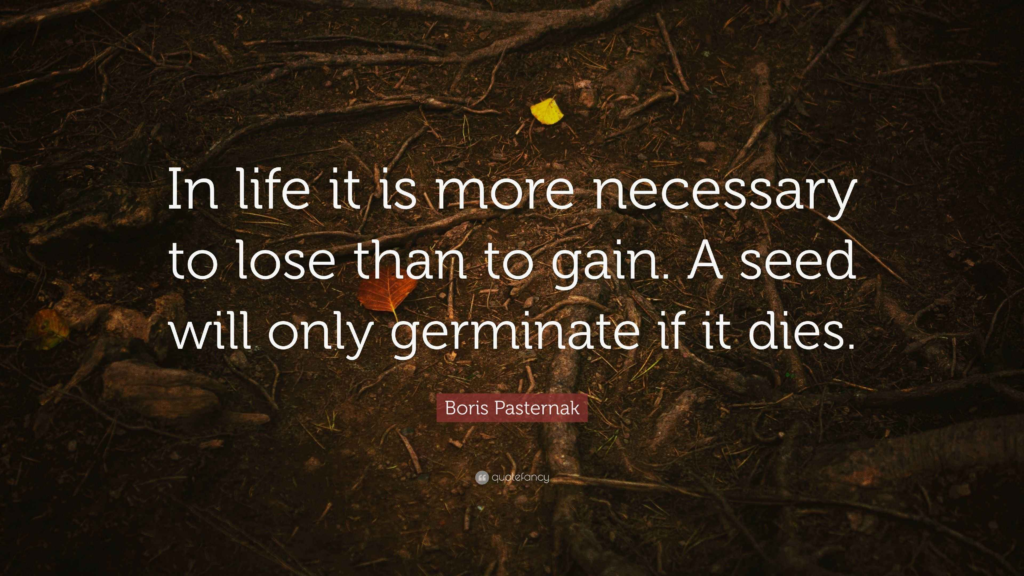
Introduction: The Growing Fascination with “Germinatoire”
When you first come across the term “germinatoire,” it might feel unfamiliar or scientific, even mysterious. Yet, behind this French-rooted word lies a world of innovation, sustainability, and scientific precision. Germinatoires—seed germination chambers—are crucial tools in modern agriculture, botany, and environmental science. These devices offer a controlled environment where seeds can be nurtured into seedlings with enhanced precision, increased efficiency, and improved outcomes. As global food demands soar and climate unpredictability rises, germinatoires are being embraced not just by laboratories but by schools, greenhouses, vertical farms, and even home growers. This article breaks down what a germinatoire truly is, why it’s gaining momentum, and how it’s transforming seed science.
What Exactly Is a Germinatoire?
The term “germinatoire” originates from the French word “germination,” meaning the process by which a seed develops into a new plant. In technical usage, a germinatoire refers to a germination chamber or unit designed to optimize the conditions necessary for seed sprouting. These chambers are enclosed systems, either analog or digitally controlled, that meticulously maintain factors such as temperature, humidity, air circulation, and sometimes light exposure—all critical for successful seed development.
Unlike traditional sowing in soil, a germinatoire offers precision. Seeds placed within the chamber undergo consistent conditions, eliminating external variables such as erratic weather or pests. This has made germinatoires indispensable in scientific research, especially where consistency and reproducibility are paramount.
How Germinatoires Work and What They Contain

Inside a germinatoire, every aspect of seed life is nurtured in a carefully calibrated setting. These chambers typically consist of tiered trays or containers for seeds, temperature control units, humidifiers, and in more advanced models, LED lighting systems mimicking sunlight. Here’s a breakdown of the major components and their functions:
H3: Key Components of a Germinatoire
- Temperature Regulators: Essential to mimic seasonal warmth that seeds require to begin biological activity.
- Humidity Controllers: These maintain the ideal moisture content, preventing the drying or rotting of seeds.
- Air Flow Systems: Ensures oxygen availability and removes excess carbon dioxide.
- Seed Trays or Mediums: Customizable holders for different seed types.
- Light Fixtures (Optional): Some seeds need light to germinate, and chambers can simulate day-night cycles.
These components work together to create a microenvironment, drastically improving seed viability compared to open-air planting. Seeds are monitored for changes in structure, moisture absorption, and sprouting response.
The Role of Germinatoires in Scientific Research
In the realm of agricultural research, genetics, and environmental conservation, germinatoires play a pivotal role. Laboratories use these units to test the viability and resilience of genetically modified seeds, track disease resistance, or monitor the impact of environmental stressors such as salinity or drought. The consistent environment offered by a germinatoire is a researcher’s dream—it allows them to isolate a single variable and monitor the seed’s response over time.
For example, researchers at agritech institutions use germinatoires to develop climate-resilient crops, essential in the era of global warming. Similarly, seed banks often rely on germinatoires to assess seed quality before storage or after decades of preservation. The stakes are high, and the accuracy these chambers provide is unmatched.
Germinatoires in Agriculture and Urban Farming
Modern agriculture is undergoing a radical transformation. With urbanization limiting arable land and climate variability affecting sowing patterns, controlled-environment agriculture (CEA) is the future. Germinatoires are an integral part of CEA, especially in vertical farms, hydroponic setups, and rooftop greenhouses.
Farmers now use these chambers during off-seasons to kickstart seedling development, giving crops a head start before being transplanted. This not only shortens the crop cycle but ensures uniformity in growth—a key factor in commercial farming. Urban growers, too, are embracing germinatoires to grow microgreens, medicinal herbs, and rare botanicals i
The Importance of Controlled Germination
Why control germination at all? Can’t seeds sprout in soil, as they have for centuries? The answer lies in the demand for precision, productivity, and predictability. Controlled germination:
- Increases Seed Viability: Seeds that germinate in optimized conditions show higher survival rates.
- Reduces Resource Waste: With accurate growth timelines, water and nutrient usage are minimized.
- Improves Yield Quality: Uniform germination results in crops of similar size and health.
- Accelerates Breeding Programs: Shortens testing time for new seed varieties.
- Supports Rare or Difficult Species: Some seeds require very specific conditions impossible to replicate outdoors.
These advantages have led to widespread adoption in places ranging from elementary school science labs to global agricultural conglomerates.
Germinatoire Use Cases Across the Globe
Across continents, germinatoires are shaping the future of farming, forestry, and conservation. In Scandinavia, forestry departments use them to study saplings before large-scale replanting. In Japan, vertical farms stack germinatoires in skyscrapers to reduce land dependence. In Africa, NGOs deploy low-cost germinatoire systems to help rural farmers start drought-tolerant crops during unpredictable weather.
Even NASA is exploring seed germination in microgravity using chamber-like systems, hoping to support space agriculture on missions to Mars and beyond. The implications are truly astronomical—literally and figuratively.
Real Challenges Faced by Germinatoire Users
While germinatoires offer numerous advantages, they also come with certain limitations and challenges that must be addressed for successful implementation:
- Cost and Accessibility: High-quality germinatoires can be expensive, especially for small-scale farmers.
- Maintenance Needs: Sensors and regulators require regular calibration to function accurately.
- Power Dependency: Most systems rely on uninterrupted electricity.
- User Expertise: Operating these systems often requires training, especially in research settings.
- Seed Compatibility: Not all seeds thrive under artificial conditions—some still prefer soil’s natural microbes.
Despite these hurdles, ongoing innovations are addressing these concerns by introducing solar-powered models, DIY germinatoires, and open-source software controls for monitoring.
Commercial and DIY Germinatoires – A Comparative Table
To understand the range and practicality of germinatoires, here’s a comparison of commercial and DIY setups:
| Feature | Commercial Germinatoire | DIY Germinatoire |
| Cost | High ($500–$5,000+) | Low ($30–$150) |
| Customization | Limited to brand options | Highly customizable |
| Ease of Use | Plug-and-play interface | Requires technical knowledge |
| Durability | Long-lasting, industrial-grade | Depends on materials used |
| Suitability for Research | Ideal for controlled experiments | Limited unless upgraded |
Educational Benefits and Eco-Awareness
Beyond agriculture and science, germinatoires are excellent educational tools. Schools and environmental camps use them to teach children how seeds grow, the impact of temperature and moisture, and how ecosystems respond to changing climates. This creates a generation more informed about sustainability and food production.
Moreover, germinatoires empower individuals to become eco-conscious growers, enabling local food production, reducing food miles, and encouraging biodiversity through rare plant conservation. The blend of education and ecology makes germinatoires far more than machines—they are tools for empowerment.
Innovations Shaping the Future of Germinatoires
Tech integration is driving germinatoires into the future. From Bluetooth-enabled controls to AI-driven climate algorithms, new models offer real-time tracking and autonomous adjustments. Some companies are integrating blockchain systems to log seed data, ensuring transparent food traceability from sprouting to supermarket.
Exciting developments include:
- Self-watering sensors using soil moisture probes.
- Cloud-based apps that notify users of germination stages.
- AI algorithms predicting optimal sprouting conditions based on weather forecasts.
These features make germinatoires not just passive chambers but intelligent allies in global food systems.
Industry Trends and Market Growth
The global germinatoire market is projected to grow rapidly due to climate uncertainty and the demand for sustainable food systems. Analysts predict a compound annual growth rate (CAGR) of 7.5% between 2024 and 2030, with major demand from Asia-Pacific and North America. Industries driving this growth include:
- Organic farming
- Genetic seed research
- Urban agriculture
- Government seed banks
- Botanical conservation projects
As these industries expand, so too does the relevance of germinatoires in real-world applications.
Designing Your Own Germinatoire at Home
For enthusiasts wanting to experiment, building a DIY germinatoire is entirely possible. All you need is a sealed container, heat source (like a heating pad), a humidity dome, and a thermometer-hygrometer combo. Add some moist paper towels or peat moss, and you have the perfect low-cost seed sprouting lab.
Key tips:
- Keep temperature between 22°C and 28°C (72°F–82°F).
- Use a spray bottle to keep humidity consistent.
- Track sprouting with a notebook or app.
- Use sterilized tools to prevent mold or bacteria growth.
Cultural and Botanical Significance of Germination
In many indigenous cultures, seed sprouting and care are symbolic acts—representing renewal, hope, and rebirth. Germinatoires, though technical, are part of this ancient narrative. They honor the age-old connection between humans and nature, updated for our technological age.
From conserving heirloom seeds to nurturing sacred plants, germinatoires are the modern-day shrines where life begins anew. Their impact stretches far beyond farming—it’s spiritual, cultural, and deeply human.
Final Thoughts: Why Germinatoires Matter More Than Ever

The world is on the cusp of a food revolution, and germinatoires are at its frontline. Whether you’re a scientist, teacher, hobbyist, or farmer, these chambers represent not just a tool but a philosophy—carefully cultivating life with intention, precision, and responsibility. As food security becomes one of the 21st century’s biggest challenges, devices like germinatoires will be central to innovative, resilient solutions.
Key Takeaways
Here are five vital points to remember from this article:
- Germinatoires are seed germination chambers that provide a controlled environment for sprouting.
- They are crucial tools in agriculture, research, and conservation for boosting seed viability and consistency.
- Innovations such as AI, sensors, and apps are transforming germinatoires into smart devices.
- DIY versions are possible and cost-effective for small-scale growers.
- Germinatoires align with global goals of sustainability, education, and food security.
Conclusion: Cultivating a Sustainable Tomorrow
In a world facing mounting agricultural, environmental, and societal pressures, germinatoires are more than scientific chambers—they are seeds of change. Their ability to streamline seed development, support research, empower communities, and spark educational curiosity places them at the heart of a more sustainable, self-reliant, and informed future. If you haven’t thought about germinatoires until now, it’s time to look at them as essential tools of progress. Because the future of food might just begin in a controlled, humid, well-lit chamber—a germinatoire.
FAQs: Frequently Asked Questions About Germinatoires
Q1: Can I use a germinatoire for all types of seeds?
Not all seeds thrive in a germinatoire. Some require specific fungi or microbes found in soil. However, most commercial and vegetable seeds do very well in controlled environments.
Q2: Is a germinatoire suitable for home use?
Yes, especially the DIY versions. With basic tools and some knowledge, home gardeners can easily use germinatoires to start seedlings more effectively.
Q3: How long does it take for seeds to germinate in a chamber?
Depending on the species, germination can take anywhere from 2 days to 2 weeks. A germinatoire speeds up this process compared to soil planting by maintaining ideal conditions.



